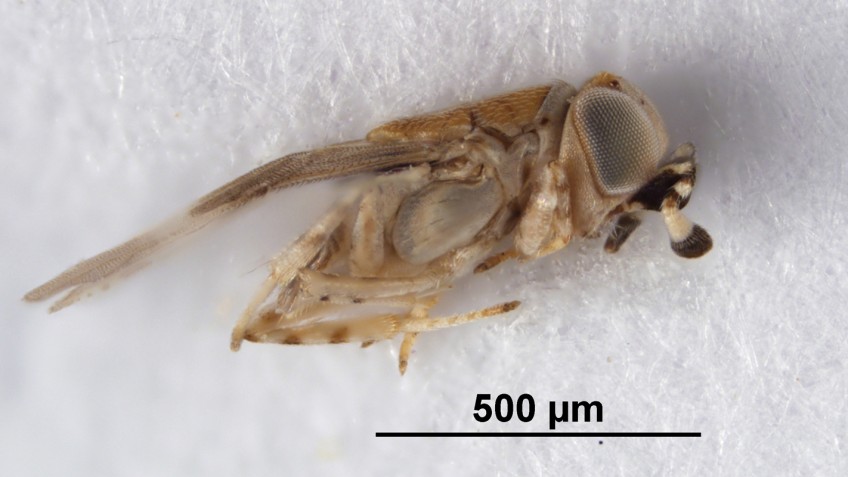Emily K. Meineke, Robert R. Dunn, and Steven D. Frank, North Carolina State University

Climate change is expected to disrupt ecosystems by changing the life cycles of insects and other organisms in unpredictable ways – and scientists are getting a preview of these changes in cities. Research from North Carolina State University shows that some insect pests are thriving in warm, urban environments and developing earlier, limiting the impact of parasitoid wasps that normally help keep those pest populations in check.
At issue is something called a “phenological mismatch,” which occurs when the timing of life stages for one organism change in relation to the timing of life stages for other, associated species. In other words, species that once had synchronized life cycles are no longer synchronized.
“We wanted to know whether higher temperatures caused phenological mismatch in a tree pest – a scale insect called Parthenolecanium quercifex – and the three parasitoid wasps that lay their eggs in the scale insects,” says Emily Meineke, a Ph.D. student at NC State and lead author of a paper on the work. “And the answer was yes and no.”
Specifically, the researchers found that P. quercifex does develop earlier in the year in a city, due to the warmer urban temperatures. But the parasitic wasps that attack scale insects are not developing earlier, which allows the scale insects to lay more eggs. This, in turn, contributes to larger pest populations.
The wasps rely on scale insects to help raise their young. Female wasps punch a hole in the shell of female scale insects and lay their eggs in the scale insect’s body cavity. The wasp eggs spend the winter lying dormant inside their hosts before hatching inside the scale’s body. The larval wasps then feed on the hemolymph, or blood, of the scale. Meanwhile, the scales are busy producing their own eggs.
Normally, the wasp larvae hatch early in the scale’s egg development cycle, and the feeding larvae weakens the scale insect, causing it to produce fewer eggs.
But the researchers found that warmer temperatures can change that outcome significantly.
For the study, the researchers collected more than 1,500 scale insects in Raleigh, North Carolina. Half of the scale insects were collected in “cold” sites with lots of foliage and less pavement, with the other half coming from “hot” sites with fewer trees and more paved surfaces. Scale insects that hosted parasitic wasp larvae in the hot sites produced twice as many eggs as parasitized scales in the cold sites.
“We think the scales at hot sites begin producing eggs earlier in the year, before the wasp larvae hatch,” Meineke says. “This effectively gives them a head start, allowing them to produce more eggs than scales in cooler environments.
“To be clear, the wasp larvae aren’t affected either way – but the warmer temperatures clearly limit the impact that the wasps have on scales,” Meineke says. “Basically, with global temperature increases, one way that nature used to limit scale populations may not work anymore.”
“Increasingly, the warming that is happening in cities seems to be offering us a lens through which we can understand the effects of future global warming,” says Dr. Rob Dunn, a professor of biological sciences at NC State and co-author of the paper. “And the future is often dependent on complex interactions among species we know little about.”
The paper, “Early pest development and loss of biological control are associated with urban warming,” was published online Nov. 19 in the journal Biology Letters. The paper was co-authored by Dr. Steve Frank, an associate professor of entomology at NC State.
The work was supported by the Department of the Interior’s Southeast Climate Science Center, under cooperative agreement numbers G11AC20471 and G13AC00405. The center is based at NC State and provides scientific information to help land managers respond effectively to climate change. The project was also supported by Agriculture and Food Research Initiative competitive grant number 2013-02476; National Science Foundation grants NSF0953390 and NSF1136703; and the U.S. Environmental Protection Agency’s Science to Achieve Results Graduate Fellowship Program.
Source:ncsu.edu